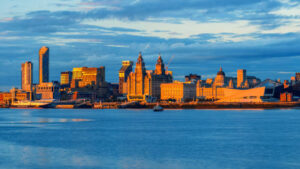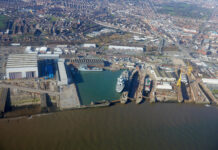
The Mersey has undergone one of the greatest river recoveries in Europe, after a record number of species were found over the past 12 months.
Mersey River Trust – an organisation that works to improve and maintain the pollution levels of the river – says it has undergone a huge transformation since the days when it was coined the ‘dirty Mersey’.
MerseyNewsLive spoke to John Sanders, Co-Director of the Trust, about the work they do.
“Mersey River Trust been going about 25 years now and our aim is to improve the river and wildlife across the North West, so that covers the whole of Greater Manchester, Cheshire and Merseyside,” he said.
“There’s about 4000km of river that we are trying to improve and we very much work on a grassroots level, working with local communities and residents to help improve their waterways for both people and the wildlife that want to live their.
“I’ve been part of the group for nearly for years, but before that I’ve been working for nearly 30 years across the Mersey River and looking after it.”
In the 1980s Liverpool was part of the industrial revolution, meaning that a huge amount of pollution leaked into the river.
It’s where the phrase ‘the Dirty Mersey’ came from and contributed to the general perception of Liverpool being seen as a rundown and worthless area.
“Liverpool was one of the areas that the industrial revolution took off, back in those days the river was basically treated as an open sewer, that’s where all the waste went from the industries.
“There was no treatment at all of any of the waste products that were going into the river and there were no real sewers, many of which were created in the 1850s.
“The sewage was collected up and then poured back into the river, this was seen as late as the 1980s. That’s late compared to other areas in the country that had improved sewage systems across the country.”
Over the decades since the 1980s, around £4bn was invested into improving the river system across Merseyside. This has resulted in the area becoming a popular place for anglers to come and the river being a fishing hotspot.
“We weren’t surprised when the news was announced that the river was one of the most habitable in Europe, but I think that too many it was a big surprise. We still get people saying that nothing lives in our river, does it!

Credit Getty Images
“But actually our rivers have improved a lot over the last 20-30 years, with lots of fish coming back.
“In the ’90s there was hardly any fish at all left in any of our rivers across Merseyside because of the pollution issues, slowly but surely those numbers have come up a lot.
“A total of 37 were found last year and 45 were found this year, showing the improvements in the cleanliness of the river
“There has always been some angling in the area but the area has certainly increased in popularity with more fish coming back to the area. Historically people didn’t really fish in these areas but many have now come back.”
The river is certainly in a much healthier place then the days of the 1980s. It has become a popular place for fishers, reflecting Liverpool’s growth in tourism and as a cultural hotspot of the North.
Featured image (c) Getty Images












